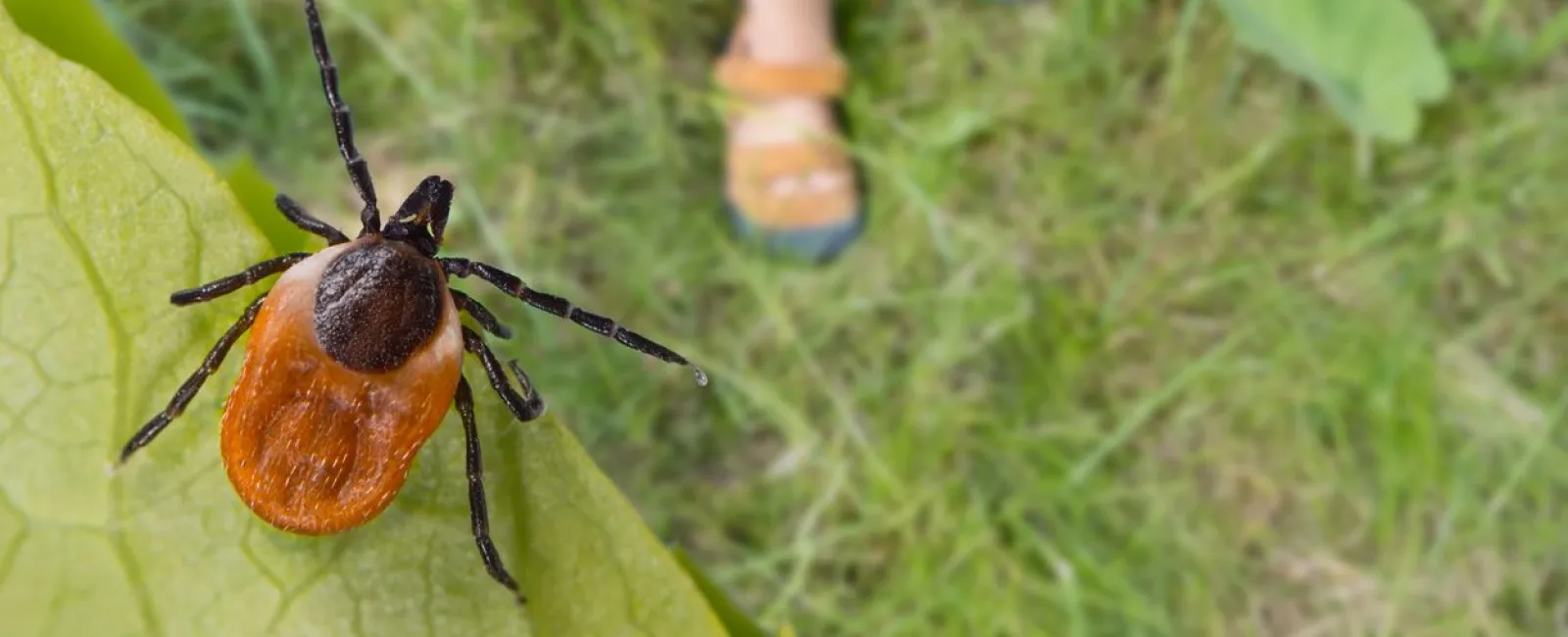While tiny in size, ticks are mighty little bloodsuckers that can carry up to 16 diseases including Lyme Disease, Rocky Mountain Spotted Fever, and Heartland Virus. Of all the tick-borne diseases we know of, Lyme disease is the most common with around 300,000 people receiving a diagnosis each year. May is National Lyme Disease Awareness Month and an opportunity to take a look at the steps you're taking to prevent ticks from attacking each time you, your family, and your pets step outside.
If you live near a wooded area, you'll need to take some extra precautions when spending time outdoors. Ticks generally hide among tall grass, fallen logs, bushes, and ground coverings, making their way to you when least expected. Through changes to the way you landscape and maintain your property, you can reduce the number of deer ticks in your backyard and lower your risk for catching Lyme disease.
Clear Tall Grasses and Brush From Your Lawn
Deer ticks are typically found in the woods, enjoying the higher humidity levels of the forest. In your yard, ticks look for brush, weeds, and tall grasses to hide and stay out of the sun. Cut bushes to manageable sizes, remove leaf litter, and stay on top of your mowing schedule. If you target where ticks live, you'll not only eliminate the pest but also the environment in which they thrive, discouraging them from making a return.
Create a Barrier From Wooded Areas
Most ticks on lawns are found in the area where your yard meets a wooded area. Avoid placing furniture near the edge of your lawn that allows ticks to migrate in. Reduce the use of ground cover and instead create a 3-foot wide barrier of wood chips or gravel between your lawn and wooded areas and around patios and playground equipment. Doing so will restrict tick migration into recreational areas.
Keep Up With Lawn Maintenance
Maintaining a well-manicured lawn and strict border for your "tick free zone" provides less tick habitat and fewer opportunities for contact with these blood suckers. If you keep a garden, plant your greenery away from the edge of your property and away from wooded areas. In addition, avoid planting flowers, trees, or shrubs that attract deer, an integral component of the deer tick's reproduction cycle.
Stack Wood Properly
Crowding around a campfire with friends and a tray of supplies for s'mores is a great way to spend a summer evening. However, improperly stored wood is an open invitation for rodents to seek shelter from bad weather, escape predators, and forage. By attracting rodents, you'll likely have to deal with the ticks that feed off them. Stack wood neatly in a pile in a dry area away from your home. Cover the pile and get it off the ground if possible.
Place Playground Equipment Centrally
Lyme disease occurs most commonly among children and older adults so it's important that these groups take extra precaution when spending time in areas prone to ticks. Playground equipment, decks, and patios should be kept away from yard edges and trees. If possible, place them in a sunny location at least 9-feet away from the edge of your woodchip barrier. Ticks prefer a wet and cool environment and likely won't make their way to a piece of equipment in the center of your yard with no shade.
Properly Discard Old Furniture
Similar to a wood pile, furniture, mattresses, and trash will give ticks a place to hide, especially as they seek shelter from the intense summer sun. Properly discard these items to eliminate the opportunities for ticks to burrow into. Ticks will lay eggs just about anywhere including coat linings, carpeting furniture, outdoor leaf brush, and other warm, soft places. Old furniture in your lawn provides an ideal environment for ticks looking to lay eggs.
Utilize Professional Pest Control Services
Lyme disease can cause life-long complications so it's not something to take lightly. If you live near woods or have had a close encounter with ticks in your lawn, it's time to take extra precautions to keep yourself, your family, and your pets safe. The service professionals at Greenix Pest Control are equipped to identify hotspots, develop a plan, and apply treatments to send ticks packing. Give us a call, learn more about our 5-step process, or get a free quote today so you can enjoy your backyard without worrying about what's lurking beyond the borders. If you would like to learn more about avoiding ticks in the Summer time, then read our article Tips for Avoiding Ticks Outdoors This Summer.

